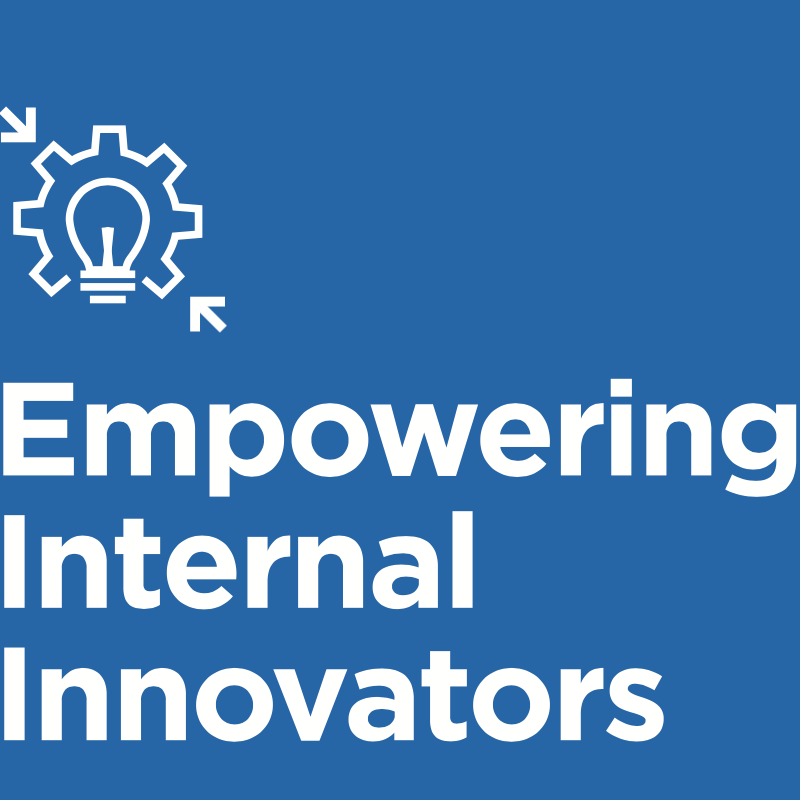
On January 6, 2017, I published my final post as the Chief Technology Officer of the U.S. Department of Health and Human Services. My intended audience included people I’d never met: the incoming agency leadership.
I’d written a memo for the transition team, which greets and orients the new leaders, but I wanted to publish a public closing argument for continuing the innovative programs that had been started in the Obama Administration. I also wanted to memorialize our accomplishments in case the Office of the CTO was abolished, which seemed like a very real possibility. This post was the final stage of my mission to save the programs.
In the summer of 2016, before we knew the outcome of the election, I directed each member of my staff to document their work — to write down the formulas, the how-to guides, and pathways that other people could follow if they wanted to create, for example, an internal accelerator, a venture fund, or an Entrepreneur-in-Residence program. Malini Sekhar and Kate Appel, two of my team members, also produced a formal report, a yearbook of sorts, to hand off to the incoming leadership. Documentation is an unglamorous but essential task for change agents.
In October 2016 I also asked my friend Len Polizzotto, an innovation and business development expert, to lead my team in a two-day workshop to hone their pitches to the incoming agency leadership, whether Democrat or Republican. We asked my colleagues to imagine that the Office of the CTO is a startup that has been acquired — why should the executives keep funding your portfolio? What problems do you solve for them?
I am very pleased to report that the Office of the CTO did survive. Bruce Greenstein was the first HHS CTO of the Trump Administration and Ed Simcox now serves in the role, supporting and expanding an ambitious portfolio.
So why am I sharing this now? Because, two years in, I finally feel like I won’t jinx it by talking about it. And it’s important to celebrate when good ideas cross party lines. That’s when you know a change has a real chance. I am proud to have brought the ship into port and handed it off to the next team. The open data and open innovation portfolio at HHS is an example of how the federal government can work on behalf of the American people, regardless of political affiliation.
To learn more about how HHS and other organizations have incorporated open innovation practices, read this Luminary Labs post.
And, for posterity, here is the post I published in January 2017:
Innovation as a Problem Solving Tool in Government
The U.S. Department of Health and Human Services (HHS) faces an increasingly complex mission amidst rapid technological change.
It has been my honor to serve as the Chief Technology Officer (CTO), working with and supporting colleagues across HHS to improve operations and more efficiently deliver services to the American people. As I close out my time here, I’d like to highlight the accomplishments of our front-line public servants.
The Office of the CTO is charged with promoting innovation and open data across the Department. Our approach to the challenge of creating a culture of innovation is to help HHS employees and leaders shine a spotlight on a problem, and then invite people from the private sector to contribute their expertise. HHS employees also use our programs to test and develop their ideas in an entrepreneurial environment.
Our programs include:
Ignite Accelerator: Empowering front-line HHS staff to test new ideas
71 teams have participated, with 13 new teams starting their training on January 30.
Ventures Fund: Investing in and scaling internal innovations that dramatically improve HHS’s capabilities
11 projects supported, with a record number of applicants now being considered for the 2017 round.
Innovates Awards: Celebrating trailblazers from across the Department
50% of awardees had partnered with organizations outside of government.
Entrepreneurs-in-Residence: Recruiting outside talent to solve complex challenges
21 entrepreneurs have joined HHS to complete a tour of duty and we are currently recruiting for a systems architect.
Competes: Tapping into the ingenuity of the American people to solve problems
140+ prize competitions have attracted 9,000+ participants from across the U.S to source solutions.
Health Data: Unleashing the power of open data to improve health and human services
3,000 data sets are now publicly available, up from 30 in 2010.
Invent Health: Identifying emerging opportunities and challenges in health and technology
Stimulated a national conversation on hardware innovation in health.
Buyers Club: Modernizing IT acquisition by testing new methods
100% of directly-supported projects awarded contracts to small businesses.
Read case studies and examples for each of these initiatives – PDF.
We have made significant progress in helping teams and individuals think of new ways to tackle important challenges. But there’s much more that can be done. As you read about each program, I invite you to consider how innovation and entrepreneurship might continue to help HHS better deliver on our mission to enhance and protect the health and well-being of all Americans.
I love seeing all this fabulous work summarized in one place. Thank you for your service in HHS and being a guiding light for our community.
Thanks! It was an honor to serve – particularly since I got to be part of the incredible work started by Todd Park & Bryan Sivak. For me it’s hand-over-heart patriotic pride to see it continue.